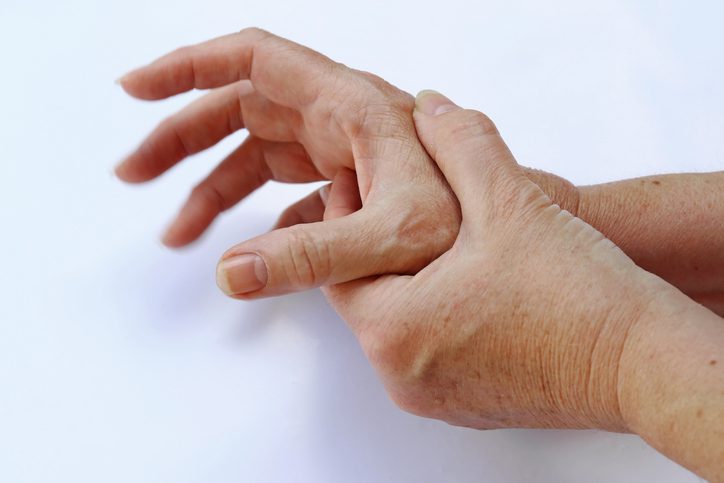Managing the risk of Hand Arm Vibration Syndrome

Authored by QBE Senior Risk Manager Nick Fox
Hand Arm Vibration Syndrome (HAVS), often referred to as ‘vibration white finger’, is a workplace condition caused by the worker’s hands and arms being exposed to vibration from hand-held power tools, such as pneumatic drills, grinders and sanders. The condition commonly affects workers in industrial sectors such as construction, automotive, manufacturing, mining and forestry.
Symptoms can include painful numbness and tingling in the hands and arms, painful joints and weakening of the muscles. There is also evidence that it may cause carpel tunnel syndrome.
HAVS is preventable, but once the damage is done it is permanent. The Health and Safety Executive reports that around 3,000 new claims for Industrial Injury Disablement Benefit are made each year in relation to vibration white finger and vibration-related carpal tunnel syndrome.
Like many occupational health disorders, it may not at first be readily apparent. Work involving exposure to vibration may continue over long periods, sometimes years, before the individual becomes aware of any symptoms, so it is important that the risk is recognised and controlled by the employer.
Managing risk
The law requires employers to identify where there is a risk to be managed and to apply good practice in the workplace to eliminate the risk, or reduce it so far as is reasonably practicable.
The management of risk from HAV can appear daunting to many employers. This is perhaps because the subject is often discussed in terms of vibration magnitudes, daily exposure limits, action levels and exposure points, which can appear complex to non-specialists. In reality, it is no more complex in principle than any other workplace hazard.
For any business associated with HAV exposure there is a risk of civil claims, which could lead to costly compensation awards, particularly where a claimant is young, and a ruling based on loss of future earnings can result in significant pay-outs running to hundreds of thousands of pounds. Controlling vibration risks should help control the risk to employees’ health and with defending future claims.
The Control of Vibration at Work Regulations 2005
It is always preferable to eliminate a risk rather than seeking to control it to a ‘safe’ level and this is an important principle of the Control of Vibration at Work Regulations 2005 (The Vibration Regulations).
Risk from HAV can, where practicable, be eliminated by changing the method by which a task involving vibrating equipment is carried out. Generally, this means applying established good practice. When an employer has done all that is reasonably practicable to eliminate vibration risks, there may still be some tasks that require the use of vibrating equipment, and which may put employees’ health at risk. The Vibration Regulations require a programme of preventive measures where such a risk is identified, which can include:
Power tools and other work equipment – Vibration should be a factor considered when selecting power tools and other work equipment. The manufacturer’s declared vibration emission values can be useful for comparison. It is important to ensure that the equipment is of good quality, is suited to the work and is efficient – an inefficient tool with a relatively low vibration magnitude can result in a higher daily vibration exposure than one with a higher vibration magnitude but which does the job in a fraction of the time.
Maintenance of equipment – Some tools and equipment can cause an increase in vibration exposure as they become worn. Maintenance of equipment to prevent avoidable increases in vibration exposure should always be considered, and where appropriate, the manufacturer’s advice on maintenance should be followed. Employees should be trained and instructed to report any equipment in poor condition; any unusual increase in vibration; or loss of efficiency. Such equipment should then be repaired or replaced with a minimum of delay.
Gloves and clothing – For vibration-exposed outdoor workers, gloves and other clothing should be selected, and worn when required, to keep the hands and body warm and dry and maintain circulation of blood to the fingers.
Allocation of work – It is good practice to control vibration exposure time by taking likely vibration exposure into account when allocating work to employees, or groups of employees. It may be necessary to prevent an individual from exceeding the exposure limit value, and this can be done by sharing work equally between a number of colleagues or planning the work with vibrating equipment to be spread over an appropriate number of days.
Training – One of the least understood aspects of vibration risk control is the need to train operators in the correct use of some types of tools, particularly vibration-reduced designs. For example, a road breaker fitted with anti-vibration handles will not produce the lower vibration magnitude of which it is capable if the operator pushes down too hard against the springs. Equipment suppliers can be asked about any training requirements and may be able to offer a training service.
Health surveillance
It is recognised that there are situations where exposure to HAV at potentially harmful levels is necessary, and there is no effective personal protective equipment. It is therefore essential that employees at risk are included in an appropriate health surveillance programme with ongoing checks for HAVS and other conditions, such as carpal tunnel syndrome. This can allow a condition to be identified in the early stages, and action taken to prevent the condition worsening.
Employees should also be given HAVS awareness training and information, ideally with refresher training at appropriate intervals, and be encouraged to report symptoms.
Where an individual has been diagnosed with HAVS or other condition, the employer should receive information on the diagnosis (subject to the employee’s agreement) and on their fitness to continue working with vibrating tools. The occupational health service provider may recommend reducing a person’s exposure to vibration and, if necessary, removing the individual away from any further exposure.
Risk management services for QBE customers
QBE helps businesses build resilience through risk management and insurance.
Depending upon the size and complexity of the business needs, QBE customers can access a wide range of risk management services, self-assessment questionnaires and risk management toolkits which are focused on the key causes of claims, and on generating action plans for improved outcomes – including protecting employees, reducing risk and making claims less likely. You can find out more about how QBE helps businesses to manage risk here.
Need to claim? Report it early
Finally, a reminder that if you have an incident and need to make an insurance claim, it’s important that you report it as soon as possible, ideally the same day. Reporting a claim early can save time and help you to receive any claim payments faster, as well as allowing us to help mitigate the cost of third-party claims.
Downloads






